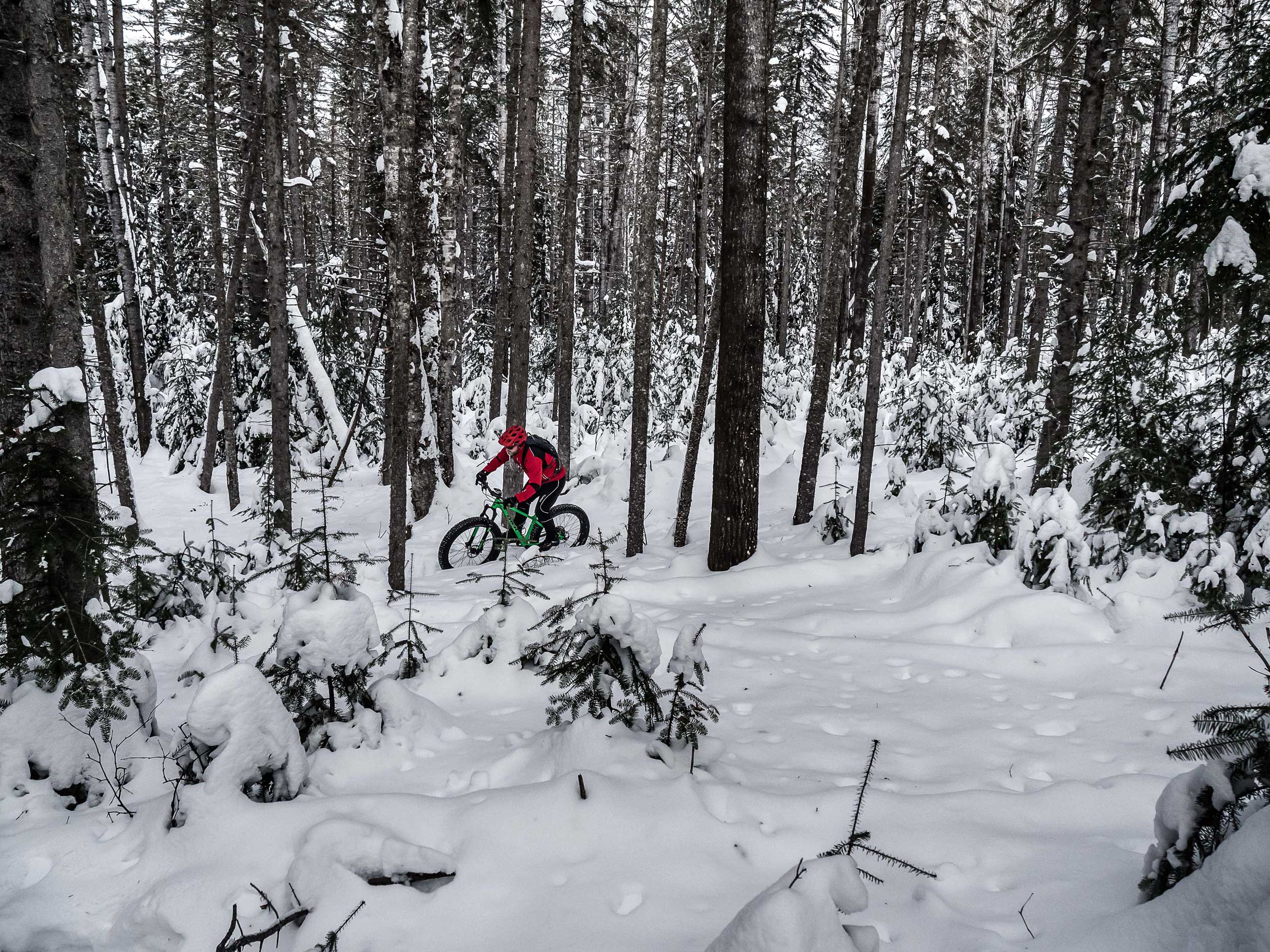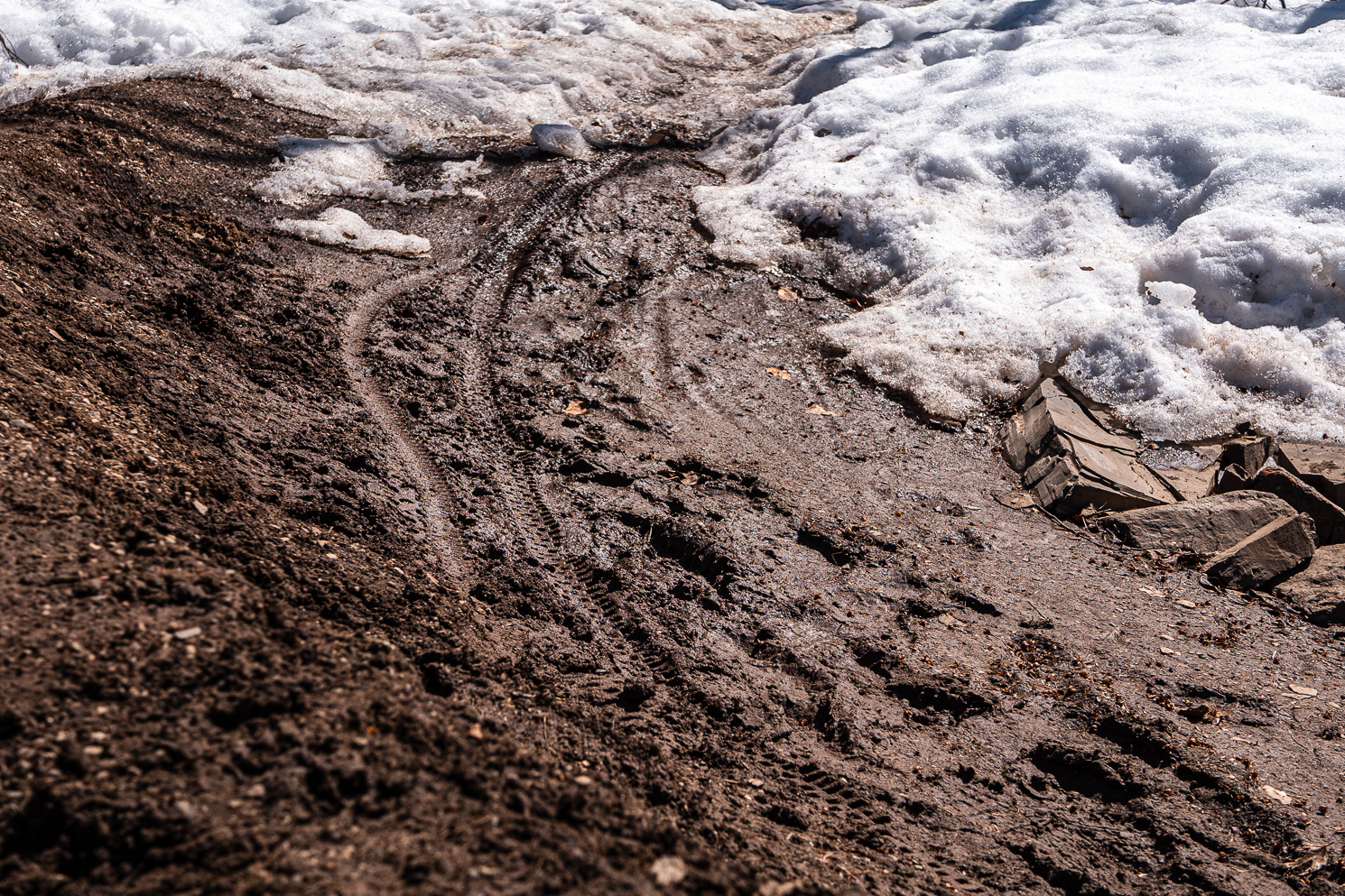TRAIL ETIQUETTE
Blacksheep Mountain Bike Clubs (BSMTB) volunteers maintain over 20km+ of singletrack in Trowbridge Forest. Blacksheep works closely with Thunder Bay Parks and Open Spaces and other community stakeholders to uphold a common Trail Etiquette. It is important that all users of the trails are familiar with the trail etiquette to ensure everyone a safe and enjoyable experience out on the trails. All users should take care to be aware of all users on the trails, yield when approaching others, and ensure they pass only when it is safe to do so. Respect and be friendly to all others on the trail.
Who has the right of way?
While out on the trails you will encounter other riders as well as other users such as runners, hikers, and snowshoers. It’s important to practice good trail etiquette to ensure everyone can have a safe and enjoyable time on the trails.
PASSING
Communicate with the other trail users you encounter. Let them know when you are approaching and that you would like to pass. If someone asks to pass, move over to the right to allow them to pass.
UPHILL TRAFFIC HAS THE RIGHT OF WAY
Users going uphill have the right away. Downhill users must yield to uphill traffic (excluding posted gravity trails).
STOPPED? MOVE OFF OF THE TRAIL
Taking a break or changing a flat? Move off of the trail when you are stopped so others can pass.
STAY ON THE TRAIL
Help us keep our trails singletrack. Don’t cut corners, venture off tread, or take shortcuts. Avoid going around puddles to prevent widening and braiding the trails. DO NOT OPEN CLOSED TRAILS.
FOLLOW POSTED SIGNAGE
While out on the trail you will encounter a variety of signage to help you find your way and keep all trail users safe. Here are some examples of the signage you will see out on the trails:

WHY IS THIS TRAIL ONE-WAY AND BIKE TRAFFIC ONLY?
Some trails are restricted to one-way bike traffic to keep all trail users safe. Riders on these trails are traveling very fast and often in the air making it difficult to stop.
PACK IT IN, PACK IT OUT
Leave no trace, help us keep the park clean.

Winter Guidelines
Blacksheep volunteers groom over 20km+ of singletrack over the winter for fat biking. You can help our efforts be snowshoeing after a fresh snowfall and staying off soft trails.
THINK BEFORE YOU SINK
Turn around if you start to leave tire ruts or foot holes deeper 1/2″ in the tread. Ride with low tire pressure or wear snowshoes to “float” on top of the groomed trail.
Tire pressure is key for winter riding. Generally, bikes with 4 to 5 inch-wide tires should be running a maximum of 5 to 8 PSI in firm conditions and 2 to 5 PSI in soft conditions. Riders using tires in 2.5 to 3 inch-wide range should be running a maximum pressure of 15 to 20 PSI. Know your tire pressure and adjust for the conditions.
AVOID THE TRAILS WHEN TEMPS ARE NEAR OR ABOVE ZERO
Trails can be soft as temperatures warm. If you are sinking, please do not ride! The ruts you leave will freeze overnight and ruin the tread. Save our volunteer groomers time and help keep the trails in great shape for all.
DON’T RIDE AFTER THE GROOMER
Groomed trails need a few hours to set up. Avoid riding when you encounter freshly groomed trails. You can also check out our Facebook page and trailforks to see when the groomers are planning on heading out.

Shoulder Season Guidelines – Spring and Late Fall
We all start to get excited about summer riding once we start to see the snowmelt. It’s important to stay off the trails while they are melting to prevent significant damage to the tread. Keep an eye out on our trail condition updates to know when the trails are good to ride. There are lots of other great spots to ride in town while you get excited about dirt.
FREEZE-THAW CYCLES
During freezing, soil particles are forced apart by expanding ice crystals. This decompacts the trail and leaves the trail with no strength to support users. This freeze/thaw cycle can also happen in the fall as trails freeze up for the winter. Be aware and please avoid trails during these times.
RIDE THROUGH PUDDLES
If you’re on an open trail and encounter a puddle, stay on the trail and ride through it. Trying to avoid a puddle widens the trail which will quickly turn the wet area into a large mud pit. Fixing these areas eats up volunteer time that could be better spent on other projects.
WHY ARE RUTS BAD FOR TRAILS?
Ruts on a trail collect and channel water causing increased erosion and trapped water on the tread which slows down the drying process.
